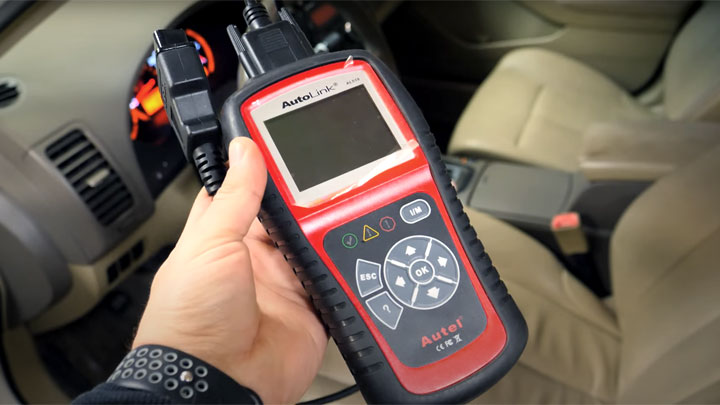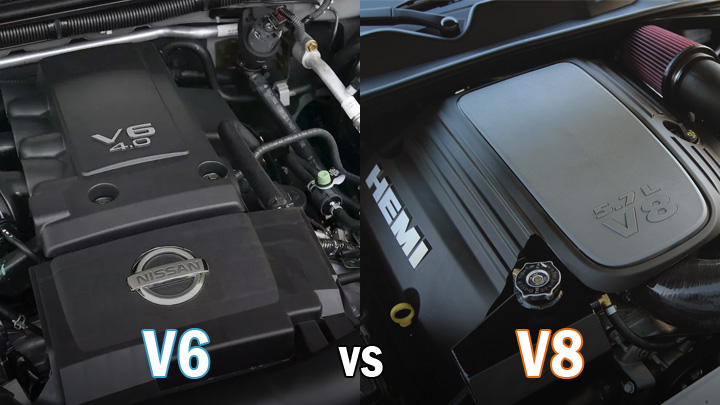Last Updated on November 30, 2022
Few sounds are sweet as that of a well-tuned, smooth idling engine. One cannot help but to marvel at the value of such mechanical perfection. However, even the heartiest of engines are prone to the occasional mechanical hardship.
Of these issues, few are as prevalent as the dreaded misfire. Misfires are not only evident to the trained ear but are easily identified by pulling active codes from a vehicle’s onboard diagnostic system. These codes are representative of a specific condition and often point to one or more affected cylinders.
One such misfire-related diagnostic trouble Code is P0304. Those with an understanding of this DTC will be well equipped to diagnose and repair the issue at hand. Luckily, such knowledge is easily obtained and can be put to work in the event that trouble of this nature is encountered.
Read on to learn more about DTC P0304, as well as how to diagnose and repair such issues, should they arise.
What Does Code P0304 Mean?
Diagnostic trouble code P0304 is used to indicate that multiple misfire episodes have been logged, in relation to an engine’s #4 cylinder. Simply put, a misfire is the relative absence of a complete combustion event, as anticipated upon a given cylinder. As such, DTC P0304 is used to describe a repeated lack of combustion on an engine’s fourth cylinder.
Misfire events are registered and logged by an engine’s PCM/ECM, in accordance with data relayed by the engine’s crankshaft position sensor. As an engine cycles, any non-contributing cylinders will lead to a temporary, yet noticeable, drop in crankshaft speed. Therefore, any crank speed reduction that correlates to a particular cylinder’s power stroke, is logged as a confirmed misfire event.
Subsequent misfires are tallied and logged as a running count. Once this count reaches a predetermined value, a vehicle’s check engine light is illuminated and an active trouble code is stored. This code (P0304) uses the final digit within its numerical run to indicate the affected cylinder, which in this case is #4.
Related: P0300, P0301, P0302, P0303, P0305, P0306
Symptoms of Code P0304

A number of symptoms have been known to accompany the onset of an active P0304 diagnostic trouble code. While these symptoms often differ on a case-by-case, and model-by-model basis, several symptoms stand out due to their prevalence.
The following are several of the most common symptoms associated with DTC P0303.
- Hesitant acceleration
- Rough idle
- Lack of power
- Poor fuel economy
- Stalling at idle
- Hard start
- “Rich” smelling exhaust
Causes of Code P0304

There are numerous potential causes for DTC P0304. The bulk of such issues pertain to a lack of fuel or spark delivery, all of which can easily serve as the root cause behind a cylinder #4 misfire.
The following are several of the most common of these issues.
- Faulty spark plugs
- Worn or damaged spark plug wires
- Inoperable coil or coil pack
- Distributor cap/rotor damage or wear
- Cylinder-specific fuel injector issues
- Mechanical wear
- Intake/vacuum leaks
Is Code P0304 Serious?
Trouble code P0304 is generally regarded as being serious in nature, and should not be ignored. This stems from the fact that spark-related misfires lead to the introduction of unburnt fuel into a vehicle’s exhaust, where it is then superheated. This has the tendency to foul a catalytic converter, leading to eventual failure.
In any event, the root cause of a P0304 trouble code should be diagnosed and remedied as soon as possible. Doing so prevents unintended downtime and excessive expenditure on repairs.
If you do not feel comfortable undertaking such repairs on your own, arrangements should be made to take your vehicle to a qualified service center at the first available date.
How to Fix a Code P0304

The following steps can be used as a basic template when attempting to successfully diagnose and repair the root cause of a vehicle’s P0304 diagnostic trouble code.
As always, one should also consult factory-specific service literature for their vehicle, before attempting such a repair.
#1 – Check For Additional DTCs
Before jumping headlong into the diagnostic process, it is important to determine whether or not any additional DTCs have been stored. If so, it is important to diagnose and remedy the root cause of each additional trouble code before continuing.
#2 – Analyze Freeze-Frame Data
You can also take stock of any freeze-frame data that has been captured during the logging of DTC P0304.
This data can provide additional information that will be of use during the diagnostic process, such as the exact RPM range at which recorded misfires take place.
#3 – Thoroughly Inspect Ignition System Components
Many misfires occur when one or more of an engine’s ignition system components begin to fail. Therefore, one should carefully inspect such components for signs of failure or damage.
Components worthy of inspection include spark plugs, spark plug wires, as well as an engine’s distributor cap and rotor button (where applicable).
#4 – Check For Presence of Spark
If no visual defects were discovered during the above mentioned inspection process, it will now be necessary to verify the presence of spark on the affected cylinder. This can be accomplished with the use of an inline spark tester.
A lack of spark indicates the need for further ignition system diagnosis, while the presence of spark casts doubt elsewhere.
#5 – Verify Fuel System Integrity, and Ensure Proper Operation
A fuel pressure gauge should now be plumbed into the engine’s fuel rail. “Key On” fuel pressure readings should meet or exceed that which is specified by the vehicle manufacturer.
A bi-directional scan tool will also prove helpful when attempting to qualify an engine’s injectors. A scan tool of this type allows each injector to be fired, releasing a small amount of fuel into the combustion chamber.=
As this occurs, a momentary dip in fuel pressure should be observed.
#6 – Perform Compression Test
If no fuel related issues are uncovered, a compression test of the affected cylinder will be warranted. Compression readings from this cylinder should be compared to readings from the remainder of the engine’s cylinders.
Additionally, a “leak-down: test should also be performed. Any discrepancies found during testing of this type is largely indicative of internal mechanical issues.
#7 – Review Factory Service Literature
Before beginning any type of substantial tear down, it is important to consult factory specific service literature for your particular vehicle. This literature will outline points of concern, and provide proper torque values for completing such a task.




